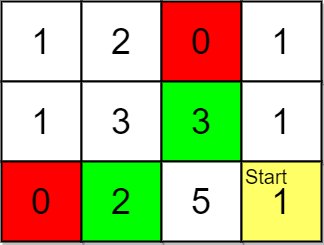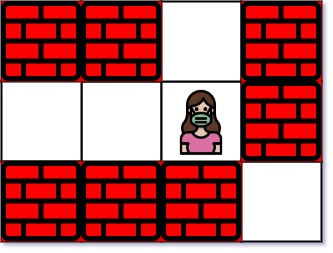You are given two 0-indexed strings source and target, both of length n and consisting of lowercase English letters. You are also given two 0-indexed character arrays original and changed, and an integer array cost, where cost[i] represents the cost of changing the character original[i] to the character changed[i].
You start with the string source. In one operation, you can pick a character x from the string and change it to the character y at a cost of z if there exists any index j such that cost[j] == z, original[j] == x, and changed[j] == y.
Return the minimum cost to convert the string source to the string target using any number of operations. If it is impossible to convert source to target, return -1.
Note that there may exist indices i, j such that original[j] == original[i] and changed[j] == changed[i].
Example 1:
Input: source = "abcd", target = "acbe", original = ["a","b","c","c","e","d"], changed = ["b","c","b","e","b","e"], cost = [2,5,5,1,2,20] Output: 28 Explanation: To convert the string "abcd" to string "acbe": - Change value at index 1 from 'b' to 'c' at a cost of 5. - Change value at index 2 from 'c' to 'e' at a cost of 1. - Change value at index 2 from 'e' to 'b' at a cost of 2. - Change value at index 3 from 'd' to 'e' at a cost of 20. The total cost incurred is 5 + 1 + 2 + 20 = 28. It can be shown that this is the minimum possible cost.
Example 2:
Input: source = "aaaa", target = "bbbb", original = ["a","c"], changed = ["c","b"], cost = [1,2] Output: 12 Explanation: To change the character 'a' to 'b' change the character 'a' to 'c' at a cost of 1, followed by changing the character 'c' to 'b' at a cost of 2, for a total cost of 1 + 2 = 3. To change all occurrences of 'a' to 'b', a total cost of 3 * 4 = 12 is incurred.
Example 3:
Input: source = "abcd", target = "abce", original = ["a"], changed = ["e"], cost = [10000] Output: -1 Explanation: It is impossible to convert source to target because the value at index 3 cannot be changed from 'd' to 'e'.
Constraints:
1 <= source.length == target.length <= 105source,targetconsist of lowercase English letters.1 <= cost.length == original.length == changed.length <= 2000original[i],changed[i]are lowercase English letters.1 <= cost[i] <= 106original[i] != changed[i]
Solution: All pairs shortest path
Compute the shortest path (min cost) for any given letter pairs.
Time complexity: O(26^3 + m + n)
Space complexity: O(26^2)
C++
|
1 2 3 4 5 6 7 8 9 10 11 12 13 14 15 16 17 18 19 20 21 22 |
class Solution { public: long long minimumCost(string s, string t, vector<char>& o, vector<char>& c, vector<int>& cost) { const int n = c.size(); vector<vector<int>> d(26, vector<int>(26, 1e9)); for (int i = 0; i < 26; ++i) d[i][i] = 0; for (int i = 0; i < n; ++i) d[o[i] - 'a'][c[i] - 'a'] = min(d[o[i] - 'a'][c[i] - 'a'], cost[i]); for (int k = 0; k < 26; ++k) for (int i = 0; i < 26;++i) for (int j = 0; j < 26; ++j) if (d[i][k] + d[k][j] < d[i][j]) d[i][j] = d[i][k] + d[k][j]; long ans = 0; for (int i = 0; i < s.size(); ++i) { if (d[s[i] - 'a'][t[i] - 'a'] >= 1e9) return -1; ans += d[s[i] - 'a'][t[i] - 'a']; } return ans; } }; |






